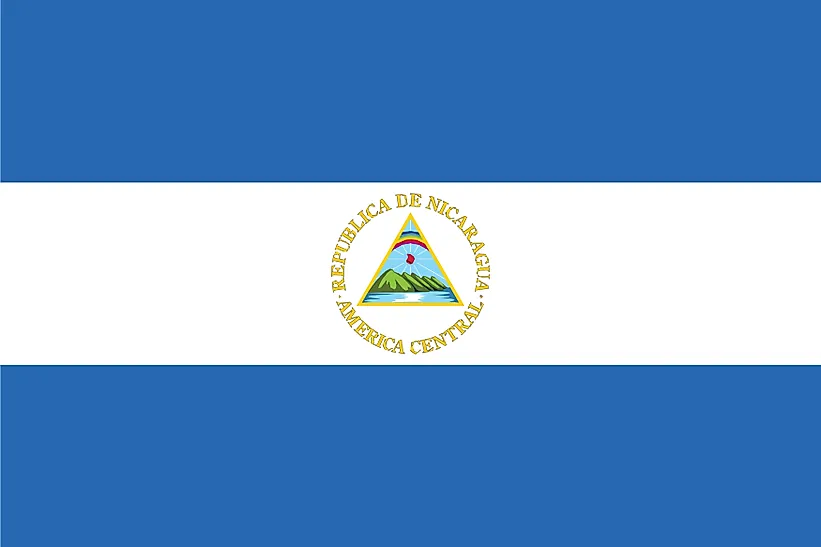
ニカラグア
| 大陸 | 米州 |
| 資本金 | マナグア |
| 人口 | 5,966,798 |
| GDP | $33.55 億ドル |
| 一人当たりGDP | $5,300 |
| ダイヤルコード | +505 |
| ISOコード(2文字) | NI |
| ISOコード(3文字) | ニック |
ニカラグアについて
火山の峰々とコロニアルな魅力が出会う国、ニカラグアへようこそ。人口約660万人、面積130,370平方キロメートルのニカラグアは、驚くべき自然の多様性と豊かな文化遺産を併せ持ち、中米最大の国です。
地理的特徴と自然の美しさ
ニカラグアの地理は、太平洋岸の火山列島からカリブ海の熱帯雨林まで、並外れた多様性を内包している。ニカラグアにはニカラグア湖とマナグア湖という2つの大きな湖があり、中米でもユニークな淡水の生態系を形成している。
マサヤのような活火山、両岸の手つかずのビーチ、緑豊かなボサワス生物圏保護区などの景観がある。変化に富んだ地形が複数の気候帯を生み出し、豊かな生物多様性を支えている。
保護地域には数多くの国立公園や保護区があり、雲霧林から海洋環境まで多様な生態系を保護している。この国の環境保護への取り組みは、ユニークな自然遺産を保護することに重点が置かれている。
文化遺産と伝統
ニカラグアの文化は、先住民、スペイン植民地時代、カリブ海の影響が混ざり合っている。特にグラナダとレオンにおける植民地時代の建築物、独特の工芸品、活気ある音楽の伝統などがその遺産である。
伝統芸術には陶器作り、ハンモック編み、木彫りなどがある。音楽の伝統にはカリブ海沿岸のパロ・デ・マヨのような独特のスタイルがあり、詩は文化表現において特別な位置を占めている。
ニカラグア料理は、土着料理とスペインの影響を組み合わせたもので、ガロ・ピント(米と豆)、ナカタマーレス、ビゴロンといった料理が特徴である。伝統的な語り部や地域の祝祭は、今も文化的生活の中心となっている。
歴史の旅
ニカラグアの歴史は、先コロンブス文明からスペインの植民地化を経て現代に至る。この国の戦略的立地は、その歴史的発展に影響を与えた。
スペインの植民地支配、1821年の独立、ウォーカー親衛隊時代、ソモサ王朝、サンディニスタ革命、その後の民主化移行など、重要な時代を含む。困難を乗り越えてきたこの国の回復力は、驚くべき強さを示している。
現代の経済状況
今日のニカラグア経済は、農業、製造業、観光業に重点を置いている。コーヒー、牛肉、タバコの輸出で知られる。
最近のイニシアティブは、再生可能エネルギー開発、観光インフラ、農業近代化に重点を置いている。ニカラグアの戦略的立地と天然資源は、経済成長の機会を提供している。
国際関係とグローバルポジション
ニカラグアは国際的なパートナーシップを発展させながら、地域組織への参加を維持している。再生可能エネルギーと環境保護へのコミットメントが国際関係に影響を与えている。
ご存知でしたか?
- ニカラグア湖には淡水のサメが生息し、世界で唯一、火山のある淡水の島がある?
- この国は電力の約半分を再生可能エネルギーでまかなっているのか?
- ニカラグアには、アマゾン以北で最大級の熱帯雨林がある。
- グラナダはアメリカ大陸最古の植民地都市である。
結論
ニカラグアは大自然と文化遺産が融合したユニークな国です。火山景観からコロニアル都市まで、伝統的な風習から発展途上の経済まで、ニカラグアはその独特な個性を守りながら進化し続けている。持続可能な開発や環境保護などの課題に取り組む中で、ニカラグアは豊かな文化遺産や自然遺産を維持しつつ、進歩することを約束し続けている。





